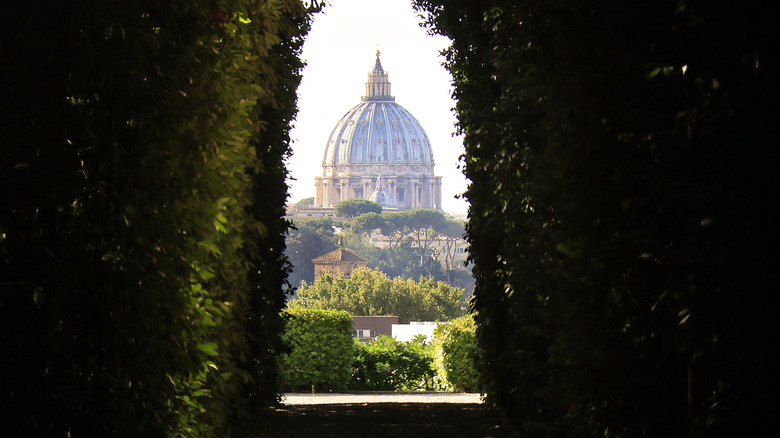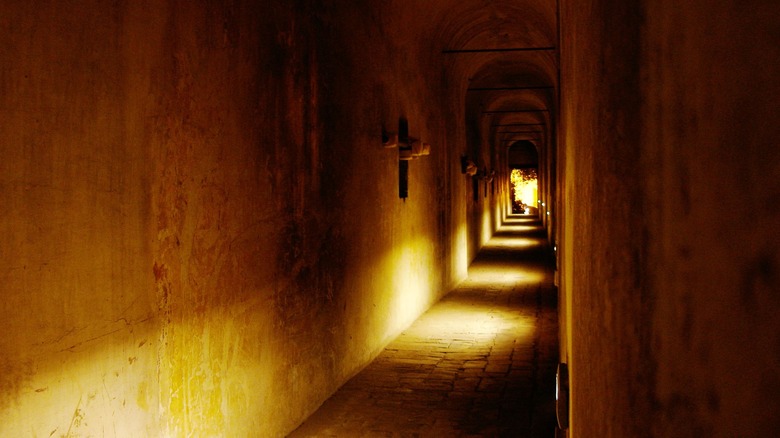How The Vatican's Secret Passageway Helped Save Popes' Lives
Vatican City is the smallest and holiest country in the world for Catholics, a country (Vatican City State) within a city (Rome) that houses the pope and high-ranking cardinals, and has done so for centuries. Its importance to Catholicism and global religion, as well as its political power and one-time temporal might made the city-state an historical target, and more than one pope has escaped invading forces through the centuries-old secret tunnels dug throughout the Vatican.
According to History, a covered passageway around a half-mile long was erected in 1277, back when Vatican City was part of the Papal States. The Passetto di Borgo connects the Vatican to the Castel Sant'Angelo, a great place to escape to, given its strong fortifications and strategic location along the Tiber river. Over the centuries, the Passetto has preserved the lives of fleeing popes, even as Rome burned around them, with the most dramatic and well-known example occurring around 500 years ago during the Sack of Rome.
The Pope escaped the Sack of Rome through the tunnel
According to Atlas Obscura, Pope Clement VII found himself in the undefended and valuable St. Peter's Basilica as an army of 35,000 rampaged through the city in the historically infamous Sack of Rome, when disgruntled unpaid mercenaries of Emperor Charles V of the Holy Roman Empire mutinied and looted the city, only to be joined by thousands of anti-Catholic Lutherans (per Daily History). Members of the Swiss Guards, with no other options, led Pope Clement into the ancient tunnel and escorted him to the relative safety of the castle, while other members of the Guard made a last stand to buy the pope some time. Pope Clement would remain in the Castel for a month under a sort of house arrest as Rome was ransacked, but at least he was alive. The same could not be said for most of the Swiss Guard, who gave their lives to protect the pope.
It wasn't the first time the Passetto had saved a pope. In 1494, Pope Alexander VI escaped the French through the secret tunnel, having expanded it just two years prior.
The passageway was left to crumble for centuries, closed off to the public, but in 2000 it was renovated and temporarily reopened; now, every summer, visitors can walk between its huddled walls just like the fleeing popes of yesteryear.

